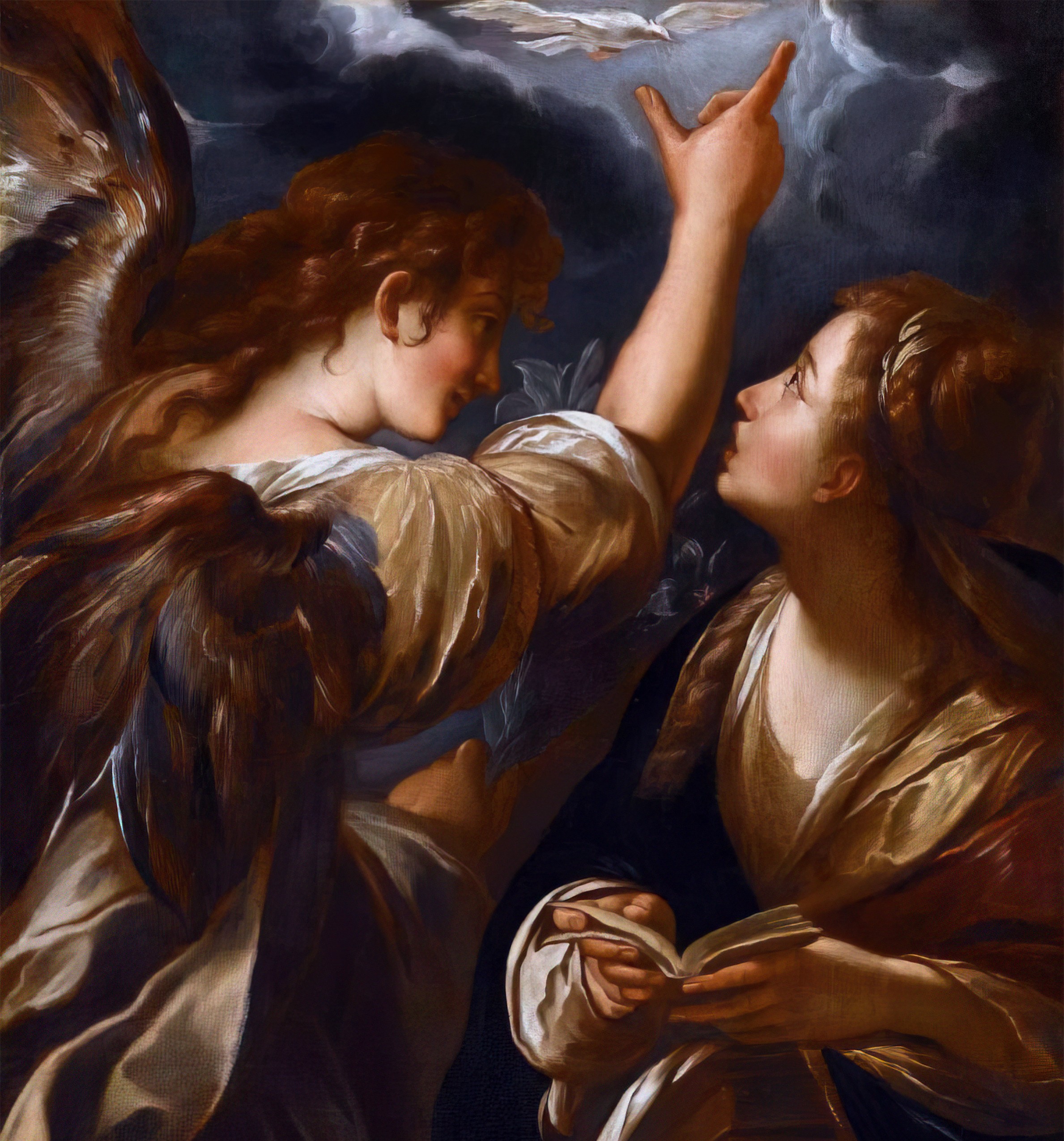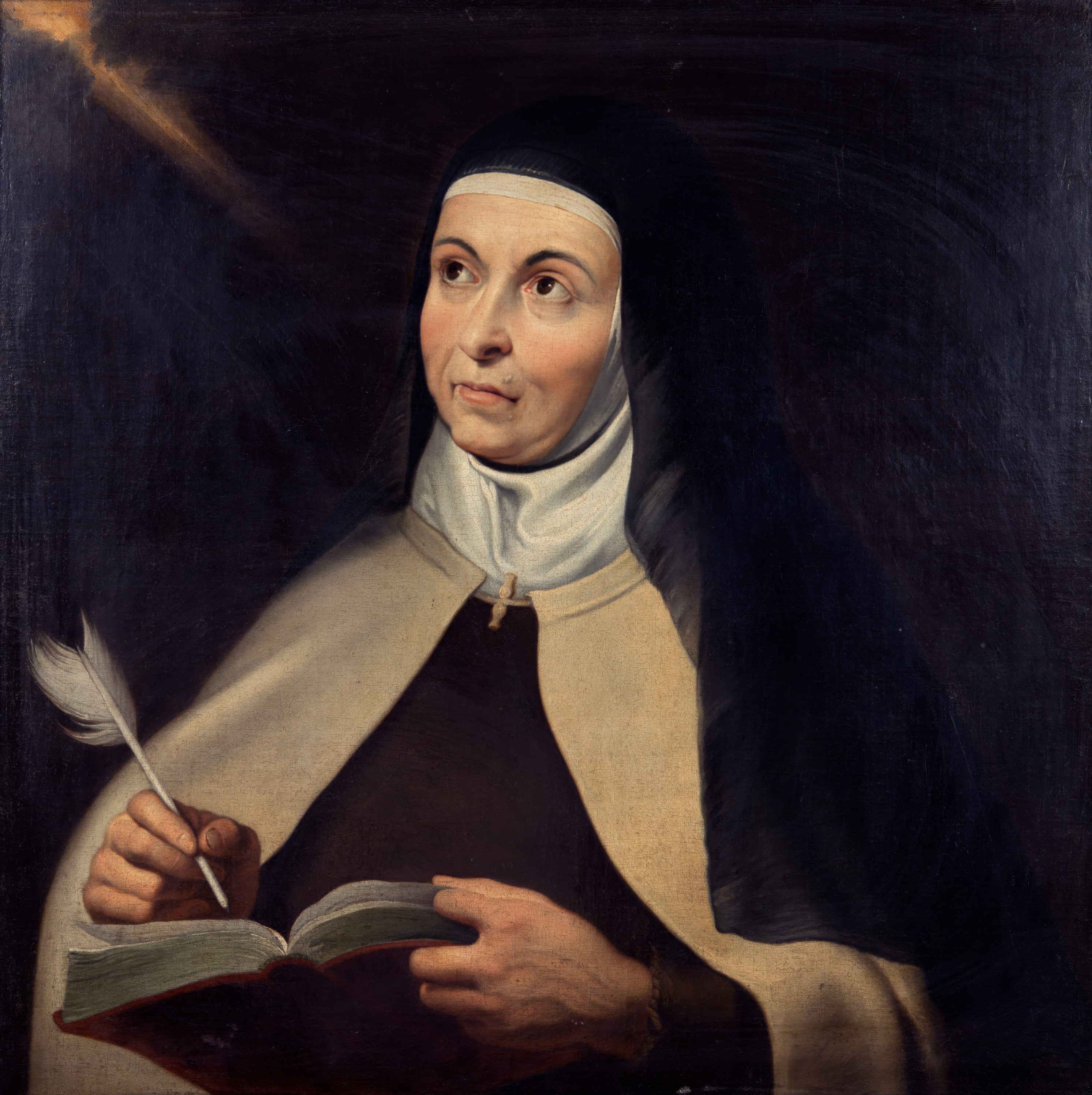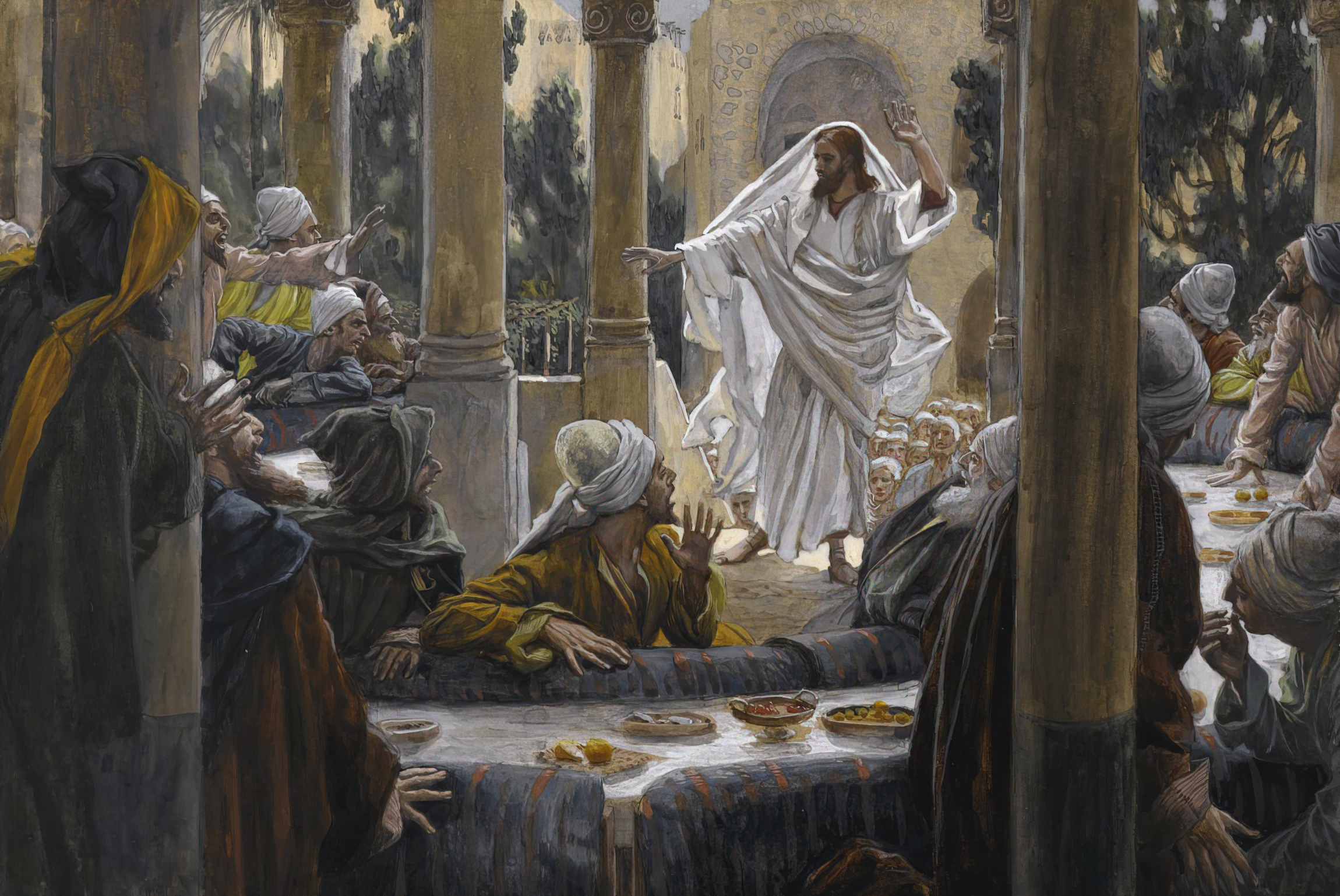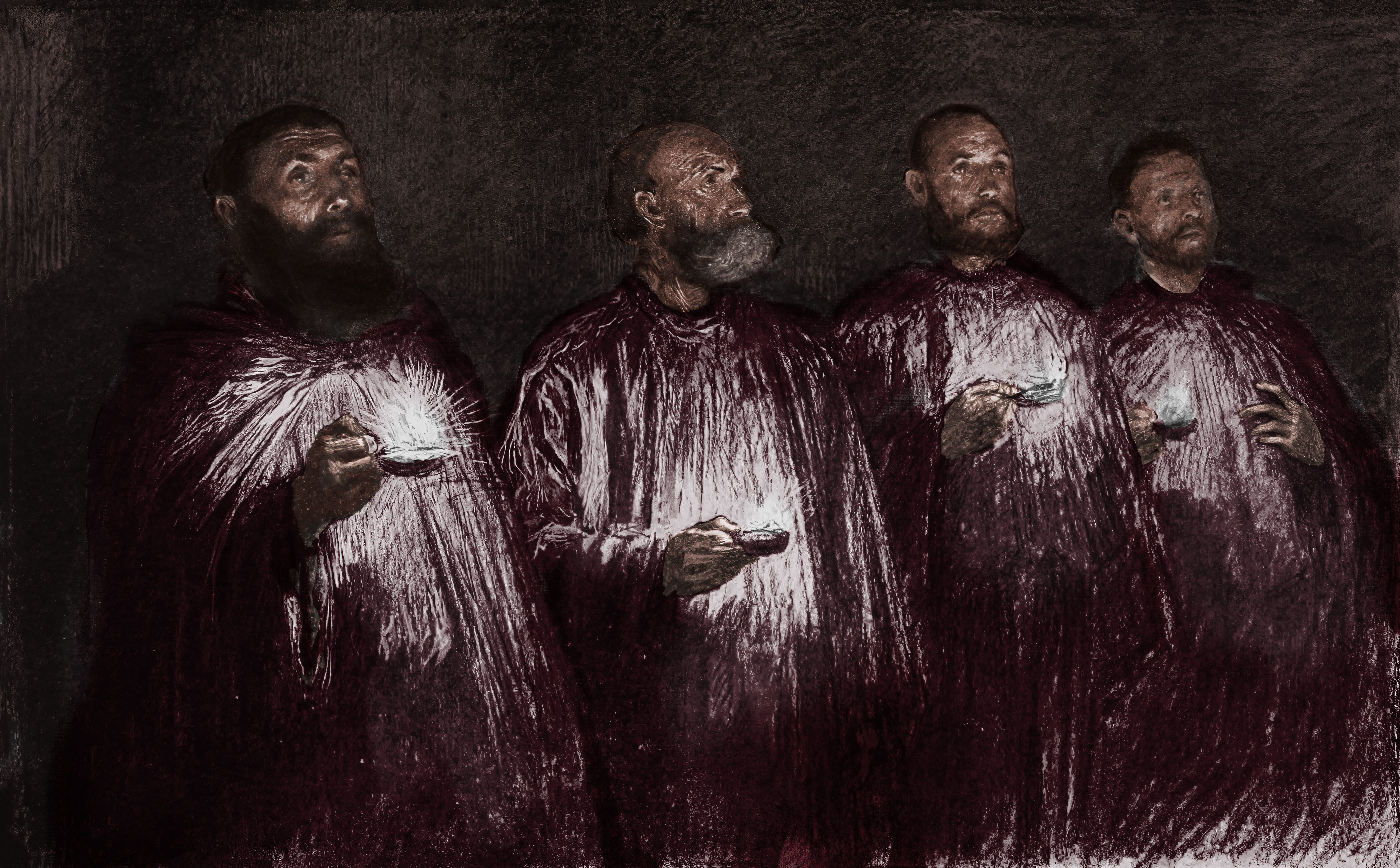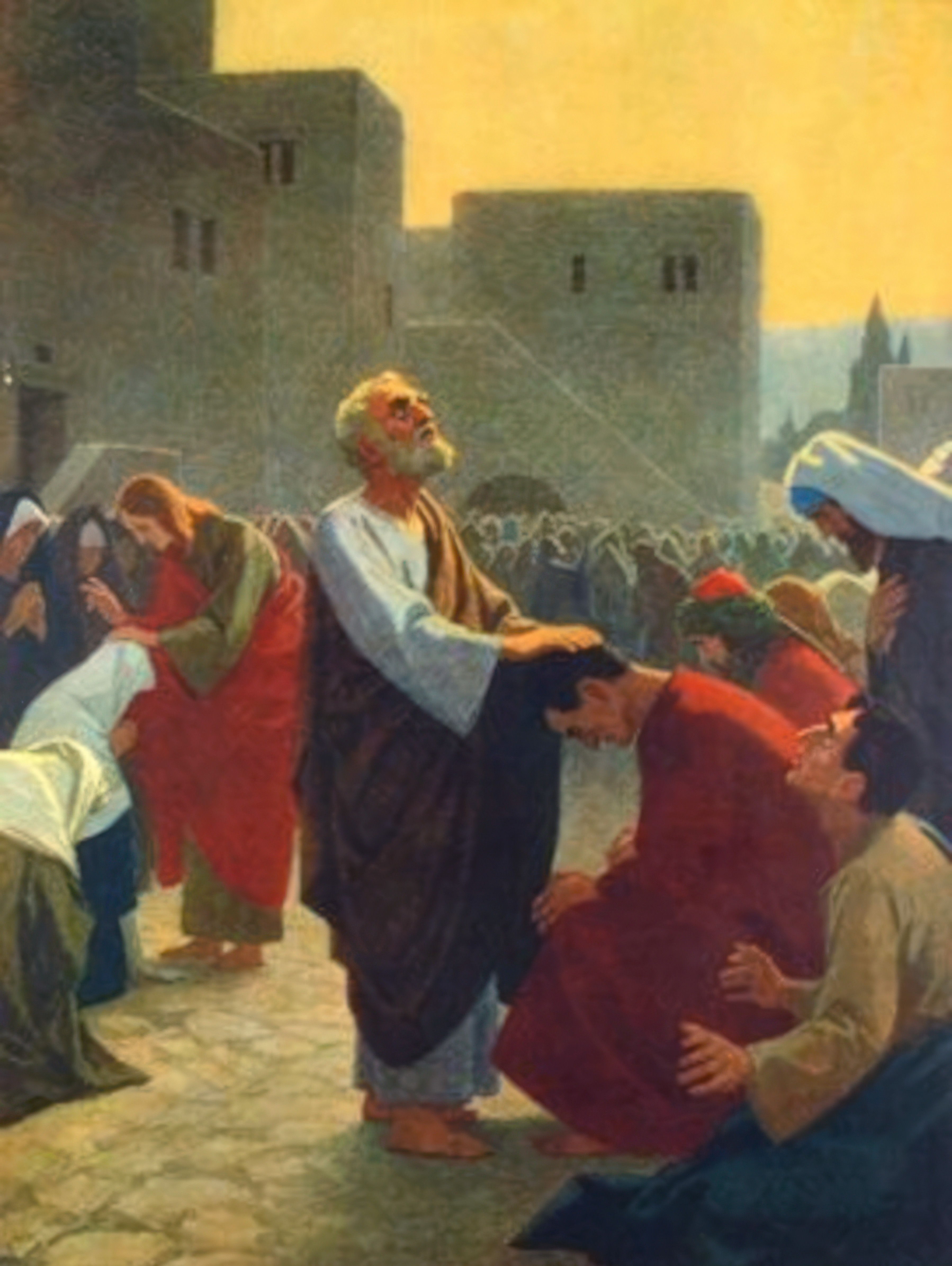The Jewish people were promised a savior, a messiah, and for thousands of years they faithfully awaited his arrival. They imagined a powerful, triumphant king descending from on high, leading a mighty army that would avenge his people and put their oppressors beneath his boot. God, author of the unexpected, had other plans.
Instead, the promised Messiah would come through a poor and humble maiden. The Savior of the world would enter that world as we all do, as a helpless infant. He would live faithfully with his family and grow among God’s people, not so that God could know us better, (He already knows every hair on our heads, after all) but so that we could know Him better. God became human so that humans could grow closer to God. And the plan began through the message of an angel.
As young Mary responds to Gabriel’s message, her answer reveals just how unexpected God’s plan is. This simple maiden promptly departs to visit her cousin, and as Elizabeth greets her proclaims the beautiful and ageless Magnificat we hear in today’s Gospel. In her prayer, the glory, might, and riches which the world reveres are scattered, cast down, and sent away empty. While the humility, lowliness, and poverty which the world abhors are sheltered, lifted up, and fulfilled.
Time and again in Scripture, the truth that is revealed turns common, worldly understanding on its ear. Jesus’ call was revolutionary then, and it remains revolutionary now: love those who hate you; forgive over and over again, even when no apology is offered; seek less power and more servitude; turn the other cheek; be merciful; be different; be the light that stuns the darkness; be the hope that startles despair. As was Gabriel’s message to the young maiden, be unexpected.
Perhaps most unexpected of all is that God – this glorious, all-powerful being who has made Himself known – gave this young woman the choice whether or not to participate in His plan of salvation. Young Mary could have said no. And He still gives us the freedom to choose Him or not as well.
God is still reaching out to each of us as He did our Blessed Mother. We will not be asked to be the Ark of the New Covenant, but we are asked, as the Virgin Mary was, to recognize Him, trust Him, and follow Him.
Al pueblo judío se le prometió un salvador, un mesías, y durante miles de años esperaron fielmente su llegada. Imaginaban a un rey poderoso y triunfante que descendía de lo alto, liderando un poderoso ejército que vengaría a su pueblo y sometería a sus opresores. Dios, autor de lo inesperado, tenía otros planes.
En cambio, el Mesías prometido vendría a través de una doncella pobre y humilde. El Salvador del mundo entraría en ese mundo como todos nosotros, como un bebé indefenso. Viviría fielmente con su familia y crecería en el pueblo de Dios, no para que Dios nos conociera mejor a nosotros (después de todo, ya conoce cada cabello de nuestra cabeza), sino para que nosotros pudiéramos conocerlo mejor a Él. Dios se hizo humano para que los seres humanos pudiéramos acercarnos a Él. Y el plan comenzó a través del mensaje de un ángel.
Cuando la joven María responde al mensaje de Gabriel, su respuesta revela cuán inesperado es el plan de Dios. Esta sencilla doncella parte de inmediato a visitar a su prima Isabel, y al saludarla, proclama el hermoso e intemporal Magníficat que escuchamos en el Evangelio de hoy. En su oración, la gloria, el poder y las riquezas que el mundo venera son dispersados, derribados y enviados fuera vacíos. Mientras que la humildad, la modestia y la pobreza que el mundo aborrece son protegidas, enaltecidas y colmadas.
Una y otra vez en las Escrituras, la verdad revelada trastoca la comprensión común y mundana. El llamado de Jesús fue revolucionario en ese entonces, y sigue siendo revolucionario hoy en día: amar a quienes te odian; perdonar una y otra vez, incluso sin que te pidan disculpas; buscar menos poder y más servidumbre; poner la otra mejilla; ser misericordioso; ser diferente; ser la luz que aturde la oscuridad; ser la esperanza que ahuyenta la desesperación. Como lo fue el mensaje de Gabriel a la joven doncella, sé inesperado.
Quizás lo más inesperado de todo es que Dios, este ser glorioso y todopoderoso que se ha dado a conocer, le dio a esta joven la opción de participar o no en su plan de salvación. La joven María podría haber dicho que no. Y Él todavía nos da la libertad de elegirlo o no.
Dios sigue extendiéndose a cada uno de nosotros como lo hizo con nuestra Santísima Madre. No se nos pedirá que seamos el Arca de la Nueva Alianza, pero sí se nos pide, como a la Virgen María, que lo reconozcamos, confiemos en Él y lo sigamos.
 Pamela Kavanaugh is a grateful wife, mother, and grandmother who has dedicated her professional life to Catholic education. Though she has done her very best to teach her students well in the subjects of language and religion, she knows that she has learned more than she has taught. She lives, teaches, and writes in southwest suburban Chicago.
Pamela Kavanaugh is a grateful wife, mother, and grandmother who has dedicated her professional life to Catholic education. Though she has done her very best to teach her students well in the subjects of language and religion, she knows that she has learned more than she has taught. She lives, teaches, and writes in southwest suburban Chicago.
Feature Image Credit: Giulio Cesare Procaccini, art.diocesan.com/stock-photo/annunciation-4163/
The views and opinions expressed in the Inspiration Daily blog are solely those of the original authors and contributors. These views and opinions do not necessarily represent those of Diocesan, the Diocesan staff, or other contributors to this blog.
